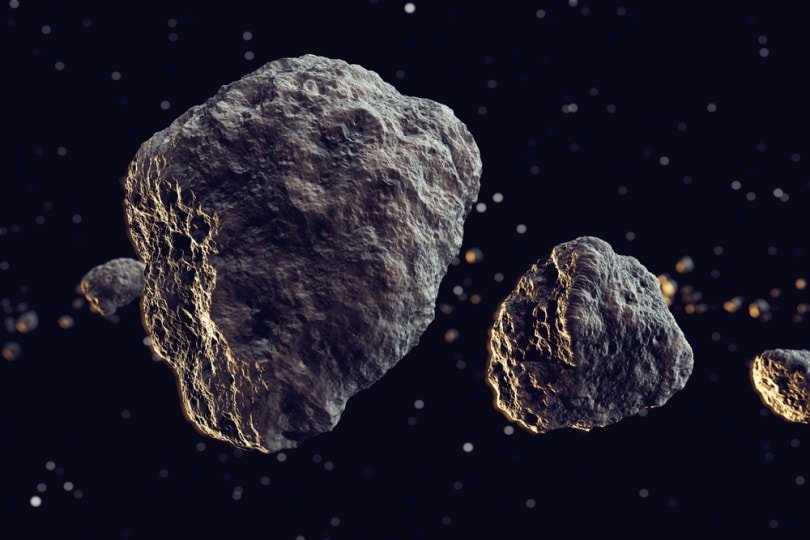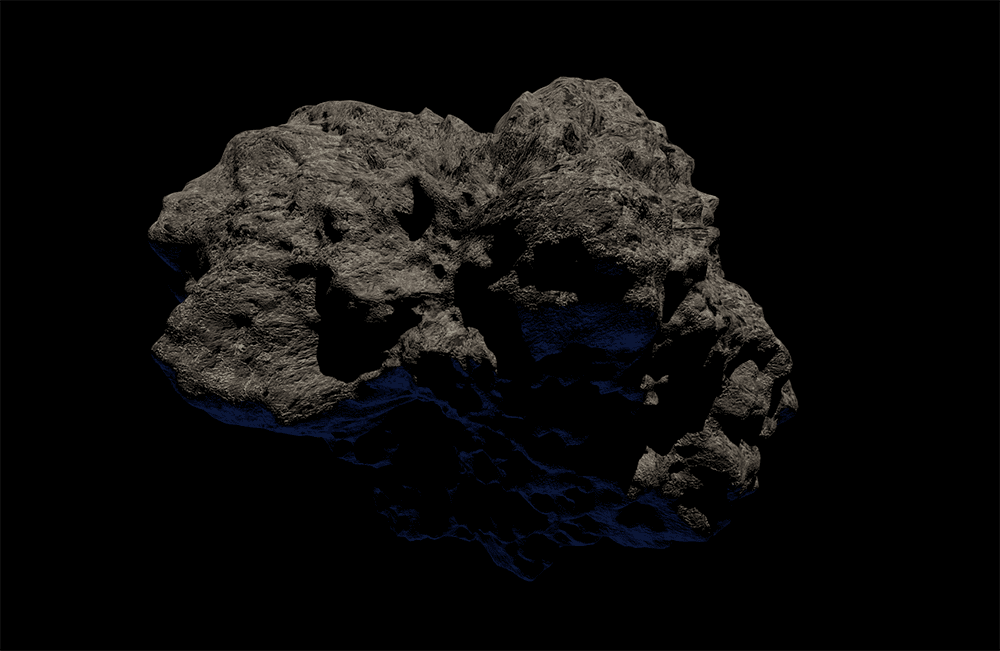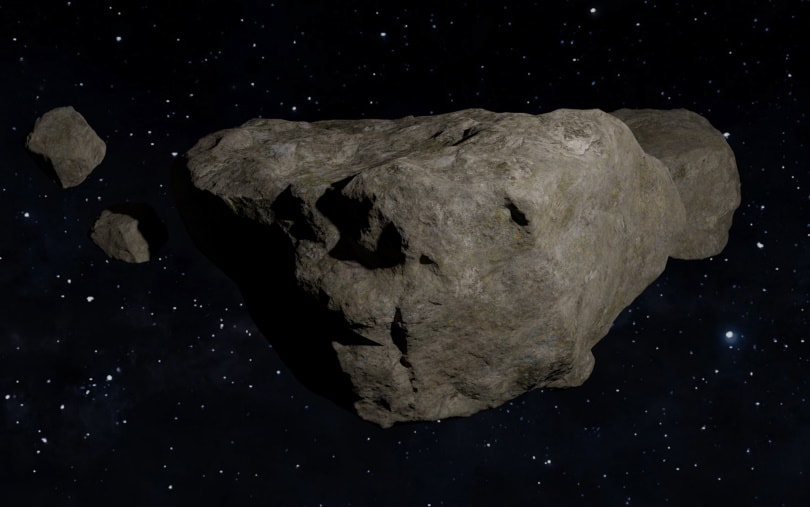How Big Was the Meteor That Killed the Dinosaurs?
Last Updated on

It was sixty-six million years ago that a cataclysmic meteor collided with Earth, causing the mass extinction of the dinosaurs. The explosive energy of this calamitous meteor blew debris of dust and rock into the atmosphere, blinding sunlight for several weeks. It triggered tsunamis, firestorms, and acidified oceans.
With results as catastrophic as the extinction of entire species, you have to wonder how large that meteor was? Although NASA doesn’t know where the meteor came from, they know it was around 7.5 miles wide.1 The meteor slammed into the Earth in the Gulf of Mexico’s Yucatan Peninsula, creating the Chicxulub crater estimated to be 120 miles in diameter.2
What Happened During the Impact?
The meteor that wiped out 75% of the Earth’s animals and resulted in the extinction of the dinosaurs hurtled at about 27,000 mph, creating a huge crater and causing immediate destruction in that area. It collided with Earth at a detrimental angle, sixty degrees above the horizon, which allowed the impact to release significant quantities of dust and minerals into the atmosphere.
The food chain collapsed as a result of there being insufficient plant life to support herbivores, affecting the predators’ ability to survive. Lethal acid rain showered for days and killed significant amounts of marine life. The impact triggered massive tsunamis, and the pulverized rock ignited wildfires.

How Long Did It Take the Earth to Recover?
When the devastating meteor hit and wiped out the dinosaurs, 75 percent of all species went with them. For five years after the impact, dust and aerosols blocked the heat and light of the Sun, slowing photosynthesis. As larger animals became extinct, early mammals and birds started occupying the space, and within 300,000 years, there were productive ecosystems across Earth. The crater where the meteor hit, the Chicxulub Crater, was one of the places where productivity recovered fastest, and scientists are studying why. It was another 10 million years before life was the same on Earth before the impact.
Is There a Meteor that Poses a Threat to Earth?
For the next 100 years, there is no meteor that is known to threaten Earth. The Sentry Impact Risk Table is updated as new meteors are found, and existing ones are studied more closely.
There is one known meteor that is being observed and studied by NASA called Bennu. Its chances of impacting Earth are 1 in 2,700, and any possible impact would occur between 2175 and 2195. The OSIRIS-Rex spacecraft will investigate Bennu for two years before sampling material from its surface. It will be studying how light absorbed from the Sun and re-radiated by Bennu affects its orbit and how that orbit can be a potential danger to Earth.

Could We Stop a Meteor from Hitting Earth?
Trying to stop a meteor from hitting Earth is not an impossible feat, but doing so would be time-consuming and costly. The objective would be to divert the meteor off course to avoid collision with Earth, rather than shattering it into similarly hazardous pieces.
This can be accomplished in a few ways. A projectile launched from a spacecraft could potentially move the meteor to another orbit. Other methods include using a high-power laser to remove the surface of the meteor or placing small rockets on the meteor’s surface. These methods could take up to 5 years, so early detection of a meteor is crucial.

Could The Dinosaurs Have Survived?
Scientists have found the cataclysmic meteor that caused the dinosaur’s extinction hit an unlikely spot. If it had landed in another location on Earth, dinosaurs might have roamed the Earth for longer.
Researchers have proposed that if the meteor hit the Earth a few million years earlier, the dinosaurs may have been more able to survive the impact. By the time the meteor collided with Earth, dinosaurs had lost their strength, declined in diversity, and decreased in population.

Conclusion
We are fortunate to have skilled scientists who can provide information about our Earth and its ecosystem from millions of years ago. It is also essential to understand and know our history, to help us prevent a similar event that could affect Earth today. The work of scientists is ongoing, with information evolving and progressing all the time, but thanks to their work, we can learn a lot, like the size of the meteor that killed the dinosaurs.
Featured Image Credit: Dabarti CGI, Shutterstock
About the Author Robert Sparks
Robert’s obsession with all things optical started early in life, when his optician father would bring home prototypes for Robert to play with. Nowadays, Robert is dedicated to helping others find the right optics for their needs. His hobbies include astronomy, astrophysics, and model building. Originally from Newark, NJ, he resides in Santa Fe, New Mexico, where the nighttime skies are filled with glittering stars.
Related Articles:
15 Crucial Facts About Ultraviolet Rays & the Sun
What Constellation Is Spica In? The Interesting Answer!
10 Interesting Leo Constellation Facts, Myths, and FAQs
15 Interesting Pegasus Constellation Facts, Myths, and FAQs
6 Interesting Sagittarius Constellation Facts, Myths, and FAQs in 2024!
What Are Constellations? Where Did They Come From?
8 Interesting Libra Constellation Facts, Myths, and FAQs
What Is Infrared Radiation? Science-Based Facts & FAQ
